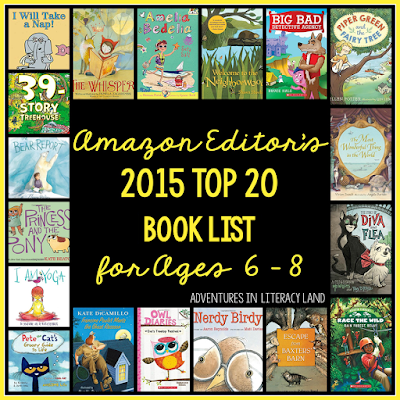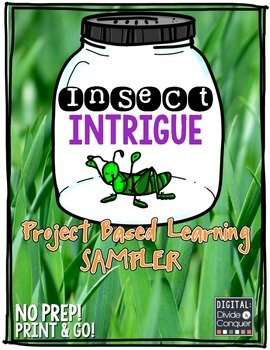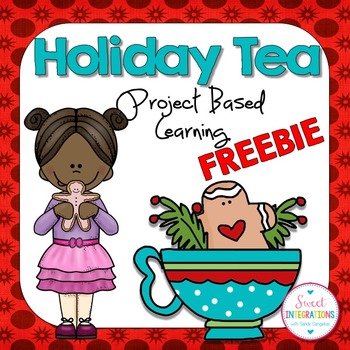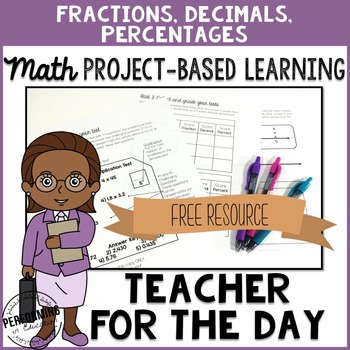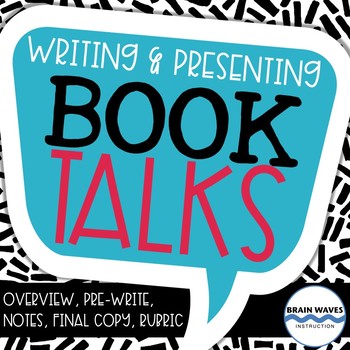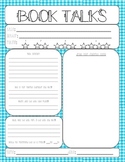As a teacher, what has been your biggest challenge to overcome? Perhaps it's been juggling planning and prep with a busy schedule. Maybe it's been working with the child in the classroom who never has homework, always needs to use the bathroom or run and errand, and never stops talking. It might even be working with difficult parents. In my situation, the obstacle I lose more sleep over and stress about is reaching what Donalyn Miller in The Book Whisperer calls, "The Dormant Reader". Yes, I have worked with all reader types throughout my teaching career, but this one is personal. This one is one of my own in my own home.
Adventures in Literacy Land: motivation
Showing posts with label motivation. Show all posts
Showing posts with label motivation. Show all posts

5 Simple Ways to Embrace the Holidays without Sacrificing Content
Are you looking for simple ways to embrace (and survive!) the holiday season without sacrificing the content you are responsible for teaching? My hand is raised! My students have fun each and every holiday season in my classroom, but I never stop teaching. You will not find my students and I watching the Grinch on a Friday afternoon...Read on to find out how you can incorporate the holidays so that your students still have fun, but continue to teach at the same time!

How to Use Top 20 Book Lists to Motivate and Excite Readers
What do you think qualifies a book for a
"Top 20" list?
Trendy Topic?
Eye catching cover?
Vivid Vocabulary?
A Plot like No Other?
Amazing facts?
Probably all of the above.
For today's post, we're going to explore those Top 20 lists a bit, see whether they are must haves, and how they can add to the learning in your classroom.
Have you wondered where you find Top 20 Lists and who makes them? Does that make a difference? You betcha! After all, if the reader is a child, it might be wise to get a child's point of view I'd think. If you think about Trip Advisor or other sites that do rankings, they typically have some criteria for their decisions and expertise in the field. Some top 20 lists may be done by sales while others may be judged by librarians or site managers. Regardless of how the lists are formed, they do highlight new titles for us. They are great ways to learn about what's new in children's literature and if you purchase them, it gives you a chance to do a little "market research" for yourself to see if they really measure up. Not willing to let loose of the cash? Maybe pull them from the library first to see for yourself.
Before I move on with this post, I feel like I should share that the idea for this post came when I visited Amazon this last weekend. I discovered the Top 20 lists in the children's book section on the site. Well, I am a book hound, so I had to check the lists out. You know there might be a title that I DON'T have (gasp!), so I went to take a peak, and here's what I found. This is the book list for ages 6-8. At first, I thought it was a list from the New York Times, but then I found it was the Amazon Editor's list. It does not say what the selection criteria was, so I'm not sure if it's based on sales, choices the editors liked, or if there was an evaluation process. Even though I'm not sure how the books were selected, I did notice common themes..animals, adventure, and make-believe. I also noticed a few favorite authors and book series including Pete the Cat, Amelia Bedelia,and Francine Poulet. Mo Willems also made the list, but there are also lots of unique looking books too. I am very curious about Nerdy Birdy, The Whisperer, and Escape from Baxter's Barn. Out of this 20 book list, only five or six were familiar to me, and I love that because now I have new options to look for in the coming months.
So, how can the enthusiasm we get when we see or hear about new titles translate into classroom enthusiasm? Ultimately, that is the reason for the book lists. The goal is to build excitement about the books and more importantly, getting the books into the hands of kids.
Before I move on with this post, I feel like I should share that the idea for this post came when I visited Amazon this last weekend. I discovered the Top 20 lists in the children's book section on the site. Well, I am a book hound, so I had to check the lists out. You know there might be a title that I DON'T have (gasp!), so I went to take a peak, and here's what I found. This is the book list for ages 6-8. At first, I thought it was a list from the New York Times, but then I found it was the Amazon Editor's list. It does not say what the selection criteria was, so I'm not sure if it's based on sales, choices the editors liked, or if there was an evaluation process. Even though I'm not sure how the books were selected, I did notice common themes..animals, adventure, and make-believe. I also noticed a few favorite authors and book series including Pete the Cat, Amelia Bedelia,and Francine Poulet. Mo Willems also made the list, but there are also lots of unique looking books too. I am very curious about Nerdy Birdy, The Whisperer, and Escape from Baxter's Barn. Out of this 20 book list, only five or six were familiar to me, and I love that because now I have new options to look for in the coming months.
So, how can the enthusiasm we get when we see or hear about new titles translate into classroom enthusiasm? Ultimately, that is the reason for the book lists. The goal is to build excitement about the books and more importantly, getting the books into the hands of kids.
TOP 20 IDEAS FOR THE CLASSROOM
Looking through Amazon's Top 20 list got my teaching wheels going. I had flashbacks to Lettermen's Top 10 Lists. Remember those?? We found them interesting and funny. I hope as you scan through these ideas, your teaching wheels get going too.
Create Room __'s Top 20 Best Books for 2015
Take your class into the library for a Top 20 analysis session. Prior to the visit, develop a selection criteria with the group. You might set a page range, publishing year (of course), characteristics the students agree upon, and time limit prior to going, and once in the library, you'd want to have forms available for the students complete in order to keep them accountable. You might pair your students to allow for deeper discussion and comparison. You could have each pair of students come up with two books they'd put on the list which would ideally end up being around 20 books total. You could gather up the books and allow the students to "visit them" throughout the following week and then rank them in the order they feel is best.
Develop Top 20 Book Lists by Genre
Develop Top 20 Book Lists by Genre
After you've developed overall winner lists as a group, you might move on to genre lists. Kids have reading preferences, so tapping into those can lead to better book selection later on. In fact, I'd divide into groups based on the books that the kids prefer. Again, you'd want to establish the selection criteria and how the researching will be done. (Do you allow kids to search the internet? In the library? or do it by polls?) Once the time limit is up, then it's time to narrow by analyzing those in the first "selection round". You might even compare this experience to the NBA draft. :-) Secretly though, you're developing a reader's eye for book selection and providing kids with a mental list of what they want to read next.
Real Readers Need Personal Lists
After experiencing these first two options, you can then focus on reader plans. Real readers need ongoing lists of what to read next. If you remember, we've had a few posts about Donalyn Miller's 50 Book Challenge, and I think Top 20 Lists feed right into it. Your kids can keep and revise their Top 20 list all year long. Imagine how fun it'd be to compare the list at the beginning of the year and at the end of the year. My guess is that it will change as the year goes, don't you think?
I read recently as I was researching and thinking about a blog post I wrote about deep thinking that classifying and categorizing information is one great way to work on deep thinking. Throughout the list making process, your kids will be using the following skills:
I read recently as I was researching and thinking about a blog post I wrote about deep thinking that classifying and categorizing information is one great way to work on deep thinking. Throughout the list making process, your kids will be using the following skills:
- comparing across texts specific features you've agreed upon.
- analyzing the text features of the books including plot and character development, vocabulary usage, and creativity.
- observing through the writer's eye which may lead to improved writing skill.
- learning about new titles and authors
- using library tools to look for their books

What skills would you add to this list? How would you change up the idea or use Top 20 lists? (please share in the comments).

Project Based Learning...Good for One, Good for ALL
We often talk about how a one-size-fits-all curriculum just doesn't work in education, but today I'm hear to share with you that one instructional practice. Project Based Learning, or PBL, IS good for one learner, but it's also good for ALL learners.

2
Recently, I was able to hear Nell Duke, a leading researcher in the area of reading, speak on the topic of engagement. We know that engagement is more important than ever with the increased demands our standards bring, and we know what happens when you give challenging work to students who aren't interested in doing it, right? ONE ANSWER...Project Based Learning.
Duke says, "If you care about kids' interests, skills, and background knowledge, you'll get better comprehension results." She cited Jerry Brophy's study on ways teachers motivate kids. According to his study, teachers should:
Model interest in learning
Induce curiosity and suspense
Make abstract concepts concrete through demo lessons
Make the lesson objective clear to the learner
Provide informative feedback
Adapt tasks to interests
Give choice for tasks
How does Project Based Learning mesh with these? Why does Duke feel PBL is the way to go? Well, she began by describing a PBL experience that was done with 3rd grade students. The teacher introduced the idea with a read aloud about pesky animals such as earthworms, spiders, bats, and snakes in the book, Animals Nobody Loves by Seymore Simon. (Would this build curiosity and suspense? Yes.)
Then, the students selected animals that they wanted to research further. (Would this be adapted to student interest? Yes.) Once the research part was complete, the students were asked to persuade others to LOVE the pesky animal and create a project that demonstrated WHY they should. (Would this task allow choice? Yes.) (Will students get immediate feedback? Yes.) Doesn't this sound like fun? As she described this project, I thought about how excited my students would be doing a project like this. The most interesting point she made though was that this was offered to ALL students in a low SES school. The results were very, very positive, and here is why.
Project Based Learning...
takes an extended period of time
achieves a purpose beyond school requirements
uses different learning styles (building, creating, answer deep questions)
is interdisciplinary
offers choice and voice
integrates reading and writing
taps into student interests, beliefs, and attitudes
is linked to standards (research strand is ideal)
gives students purpose for reading
AND allows students to reach a NEW audience
We know when students have a deep desire to read challenging texts, motivation will help them push through to complete it. We also know that reading multiple texts on the same topic deepens understanding of the content as well as related vocabulary too, so there is certainly research to support using PBL with ALL students.
How to Get Started
To prepare for this post, I reached out to my blogging friends to find additional blog posts and resources that teachers could use. First, I'll share posts for additional reading. If you are just getting started, you are sure to have lots of questions. These posts will hopefully take care of those and help you see a few more PBL examples.
This post is from Matt at Digital Divide and Conquer, and if you visit Matt's blog, you'll find a plethora of resources as well as informational posts on PBL I liked this post for explaining step by step how to dig into it. It's a MUST read, and his PBL units have been recommended by several who have used them.
This post from Performing in Education explains what PBL is, how it looks for teachers and students, what the process is, and (lucky you), it includes a sample resource.
Cyndie at Chalk One Up for the Teacher has jumped into the PBL pond, and explained a PBL experience she had with her students. I just loved this example, and I know my students would love it too. This one is a great example of PBL in the primary grades. Cyndie's students began with reading books in The Magic Treehouse series, and these books led to "inquiring minds". Having a leading question is important because it drives the exploration. Be sure to check this out if you're teaching grades 1-3.
Finally, I had to share this project from my friend, Sandy at Sweet Integrations. She has quite a few PBL sets in her store, and this post on her blog really caught my attention because we've read about the Iditarod with my fifth grade groups. The kids read Stone Fox in early fourth grade, so they had a little schema for dogsled racing. I had also used the book, Dogteam by Gary Paulsen for descriptive writing, and we had read a Close Reading article about the Iditarod too. Sandy's project would have been so perfect for them. (another year I guess) Anyway, she offers great ideas in her post about it if you think your students would be interested in learning more.
Free Sets to Get Started
Now, doesn't this sound like fun? Remember, Project Based Learning is not just a teaching idea for your Talented and Gifted students. Project Based Learning is a great technique for ALL.
Have a great day, and I'll see you next month.


Silent Reading Partners
Reluctant readers versus avid readers. We all have them. We work hard to keep the avid readers excited and challenged. We work hard to get the reluctant readers excited and challenged.
How do we do this? In so may different ways. Engaging lessons, book choice, celebrated successes, providing books of interest, book clubs...the list goes on. And I know as teachers, we will never stop searching for those ways to excite, engage, and challenge.
This past week my daughters participated in a "Tail Waggin' Tutors" program at our local library. The energy was at all-time high in our home before and after the event. They each picked out a book to take with them and they read to two dogs each. Bookmarks with a picture of the dogs were in each of their hands on the way out the door.
3
How do we do this? In so may different ways. Engaging lessons, book choice, celebrated successes, providing books of interest, book clubs...the list goes on. And I know as teachers, we will never stop searching for those ways to excite, engage, and challenge.
To
become better at anything in life, we need practice. To become a
better reader, students need to read. And some of our reluctant readers
don't read as often because they feel that they can't or that it is too
hard. They need to feel successful and there is something to be said
about reading without any judgements being made. Silent reading partners can provide this.
These silent reading partners provided both excitement and challenge to my readers. For my youngest (kinder), she walked away with a book that she wanted to try to read to me--but would have told me prior that she could not read it. For my oldest (firstie), she walked away eager to share her experience and tell about all the jokes she shared with the dogs.
The dogs listened. No judgements made.
Don't get me wrong...students need to have the feedback that we provide them during guided reading groups or that parents provide when reading at home. Students need the modeling of a choral read, echo read, or repeated reading. Students need to hear strong, engaging read alouds. They need to read books at their instructional and independent level.
But they also need to read because they just want to read-without judgement, without feedback-without agenda. Just read to read.
This doesn't have to occur only through a great program that comes to the library or our schools. Maybe it is a pet in the home or a baby sibling. The opportunities for a silent reading buddy may already be present.
At the beginning of the year, my teammate lined up all the reading buddies she had bought at garage sales over the summer. Each student in our grade got to take home a buddy to read to each night.
Some students do not have a family member to read to, or a parent that is going to encourage read aloud time each night. The hope is that this little silent reading partner can excite and challenge our reluctant and avid readers.
As spring begins to show its face and summer is on the horizon, I begin thinking about what I have done and what more I can do to ensure that my students keep reading. Even when I am not there to listen.

Increasing Pupil Engagement
This was a tricky post to write as I wouldn't really consider myself to have any particular area of expertise! I have led literacy in my school before but currently lead math, I love teaching phonics but fins myself teaching more RE each week these days than anything else, I deliver a lot of staff training, but this is on a whole range of different topics - definitely not just literacy.
So I looked back over the posts I have written for Adventures in Literacy Land over the last year and realised that pupil engagement strategies was a common thread...
Making Writing Special: one way I set up the classroom environment to engage and motivate writers.
Using Story Sacks: a way to help children get exited about and explore different aspects of stories.
Learning Grids: a great and easy strategy for making learning more hands on and fun!
Consensus Activity: engage children by developing speaking and listening and collaboration skills.
This year I am cover teaching one day a week for a particular class and I am struggling to hold their attention for any significant amount of time. I am not used to this! I'm finding it hard. I need to cut my teacher talk time down even more.
The jigsaw strategy for imparting information is nothing new. I've read about it, been told about it on courses, watched video clips even. But for some reason I've never really used it as a strategy in my classroom.
Last week we celebrated World Religion Day and I wanted to give the class time to explore some of the main religions represented in our school. There are lots of lovely PowerPoint presentations out there that I could have talked through but instead, I thought I would try out this strategy with the class.
I set children in home groups of 6 and paired them up with each pair assigned a different religion. Each pair of children was given time to explore the religion using the information sheets I provided and a laptop to read the always useful information pages on the Woodlands Junior site!
After a short time, I moved the children to form their expert groups - pairs of children from different home groups who had been researching the same religion. They got together and discussed what they had found. Pairs had discovered similar information but each also seemed to have something new to share that the others hadn't read yet or taken in.
I then asked these expert groups to create an interactive poster to share at the end of the afternoon.
I gave them access to some lovely interactive notebook templates by Meredith Anderson and off they went!
I deviated from the traditional jigsaw strategy in that I didn't have them report back and share their expert knowledge in home groups again but rather had them present to the whole class...

Book Talks on the Menu
Pause for a moment to consider what you do to get your students reading? Maybe you help them find books that match their interests, or perhaps you use read alouds daily to show your students new authors. Do you talk with them about what they're reading? That sure can give you a window into their thinking and interests. Well, on today's menu is the topic of book talks. Today, I'd like to share with you some simple ways you can make this time purposeful, fun, and motivating.
Students need to talk to demonstrate their thinking. If students are sharing about their reading, they will be more likely to pay attention to the important points of the text which provides accountability for them. By talking through their reading, we are able to observe comprehension skills/strategies, and by listening to students discuss their reading, students are exposed to new reading options they may select in the future.
 Book talks can be as simple or complex as you want to make them. Students can have a scheduled time for sharing and even have a limited time for their presentation, but teachers can also make an event out of the book talk day. Look at the image to the right. Most kids would love the opportunity to dine in a "Paris Cafe" and have cookies and milk during their sharing time. Check out this image and post from Second Grade Smarty Arties. This would be so much fun.
Book talks can be as simple or complex as you want to make them. Students can have a scheduled time for sharing and even have a limited time for their presentation, but teachers can also make an event out of the book talk day. Look at the image to the right. Most kids would love the opportunity to dine in a "Paris Cafe" and have cookies and milk during their sharing time. Check out this image and post from Second Grade Smarty Arties. This would be so much fun.  Another great option that may be easier to do is a graffiti wall. You can give your students time to record important quotes or have them share a brief introduction. The key with whatever you choose as the book talk format is to allow time for conversation and make it a positive experience for the kids. Book talks can also be brief and worked into the daily routine for much of the time.
Another great option that may be easier to do is a graffiti wall. You can give your students time to record important quotes or have them share a brief introduction. The key with whatever you choose as the book talk format is to allow time for conversation and make it a positive experience for the kids. Book talks can also be brief and worked into the daily routine for much of the time.With struggling readers, you might have a parent volunteer come in for a lunch bunch book club. Last year, we had an enthusiastic parent come, and all she did was chat with the kids about what they were reading and just daily routines. It really encouraged the group and made a huge difference for them (and they loved the lunchtime attention).
More important than anything else is to keep your kids enthusiastic and eager to read. Help them to make plans for what they want to read next, and let them keep a stash of books on hand at all times. They can't stay motivated if a routine is not established. If it helps for your students to keep a running list of books they've completed, then do it, but have them keep a list of book recommendations too. (ones their friends have enjoyed) When students get to recommend to each other, it also gives them something to talk about.
If you're interested in seeing a few other ideas, you might check out these products to get started.
If you'd like a set of directions, rubric, and form for peer reviews, [this freebie] offers all three.
I hope you'll get this plan into practice and spark reading motivation this year.


5 Ways to Motivate Kids to Read in the Summer
Hello, everyone! It's Andrea from Reading Toward the Stars! It's hard to believe that summer is here for me. You may still have some time left, but it won't be long!
My son has already started to tell me that there is "nothing to do" after being two days in! Guess what?! He is wrong! There is an entire world out there, and so much of it can be found in books. I am here to share five ways to motivate your students or children to read this summer.
Read on to see the five ways I motivate my own children to read, read, read!
The first thing I do every summer is visit the library. Just going to the library allows children to choose their very own books from so many books. They are free, so if your child doesn't like a book, there is no money lost. And most libraries have a summer reading incentive program where children can earn prizes for reading.
Finding that magical book or series is the moment that defines reading for students. Giving children choice helps them embrace that love of reading too. We were given a suggested list to read, which my son turned his nose up to. He already has his books ready for the summer. Here are a few he plans to read this summer.
My son has to have the right place to read. One summer he took this old box and made his reading nook. He loved doing this and spent much of his reading time there. He also enjoys reading in the comfort of his own bed.
Another summer he hurt his legs at the beach and found that the beach was a perfect place to read.
The places are endless! Go outside, stay inside, anyplace is a good place to read!
Reading socially is great for children, especially as they get older. Now that my son can text, he and his friends can have book discussions and give recommendations. Our next door neighbor is a middle school teacher and gives her son and my son different books to read. After they read them, they switch and discuss. How cool!
Another way to get kids to read socially is to form a little book club with a play date. Children can discuss the books they have read. Last year, Emily wrote a great post about hosting a book swap at your house or at school. This is another great way to discuss books and get new books at the same time!
Children can read anything to be reading! My daughter is so excited when I read directions to her, and she can help me make something. We had so much fun making this simple wand with household items while reading directions. It was fun, and we were able to spend time together.
Get books that have some summer learning experiences with them. Go outside and learn! If your family is going camping, read about what you need to do go camping. Does your child like Legos or Minecraft? There are books for those too!
But, to make it fun, it can also just be fun to read and enjoy it. No projects or essays ~ just the pure enjoyment of reading, wherever and whenever they want! That is the best motivation!
Enjoy your summer, and don't forget to read, read, read!
Subscribe to:
Posts (Atom)




